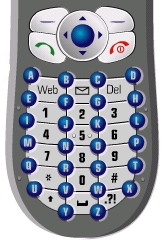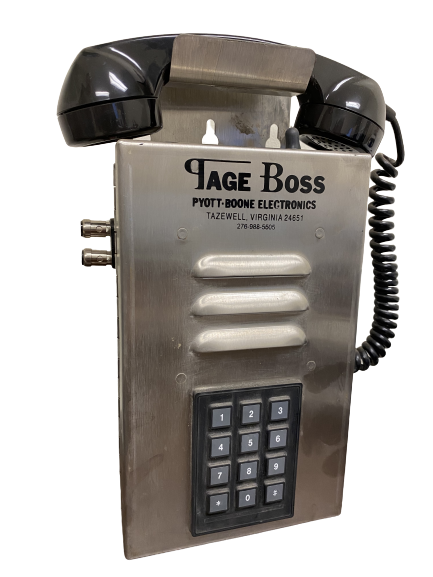

This layout was chosen after extensive human factors testing from Bell Labs. The layout of the digits is different from that commonly appearing on calculators and numeric keypads. Phone with letters on its rotary dial (1950s, UK) DTMF keypad frequencies (with sound clips)

For example, pressing the '1' key will result in a sound composed of both a 697 and a 1209 hertz (Hz) tone. The row in which the key appears determines the low frequency, and the column determines the high frequency. When used to dial a telephone number, pressing a single key will produce a dual-tone multi-frequency signaling pitch consisting of two simultaneous pure tone sinusoidal frequencies. Most keypads have a " ✻" key (called star or asterisk) on the bottom left and a " #" (called hash, pound, or other names) on the bottom right. The contemporary keypad is laid out in a 4 ×3 grid, although the original DTMF system in the new keypad had an additional column for four now-defunct menu selector keys (see Autovon). Karlin, an industrial psychologist at Bell Labs. The invention of the keypad is attributed to John E. It was standardised when the dual-tone multi-frequency system in the new push-button telephone was introduced in the 1960s, which gradually replaced the rotary dial.

A telephone keypad using the ITU E 1.161 International Standard, as used for text messaging.Ī telephone keypad is a keypad that appears on a "Touch Tone" telephone.


 0 kommentar(er)
0 kommentar(er)
